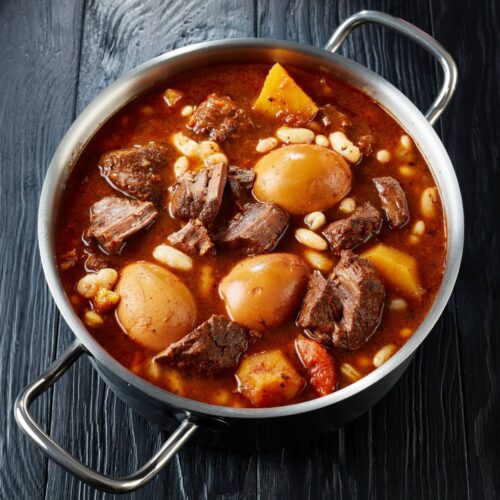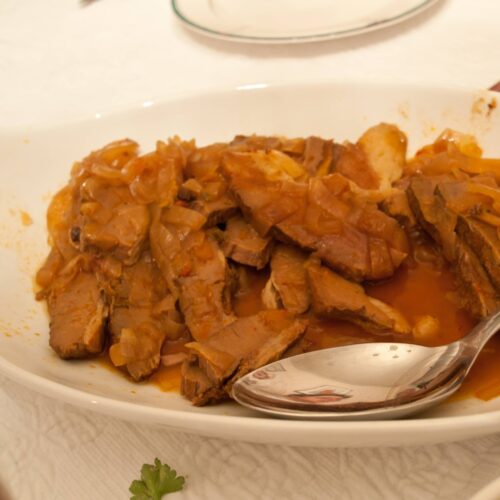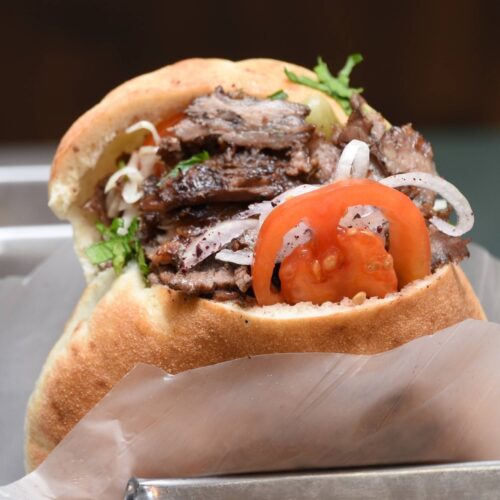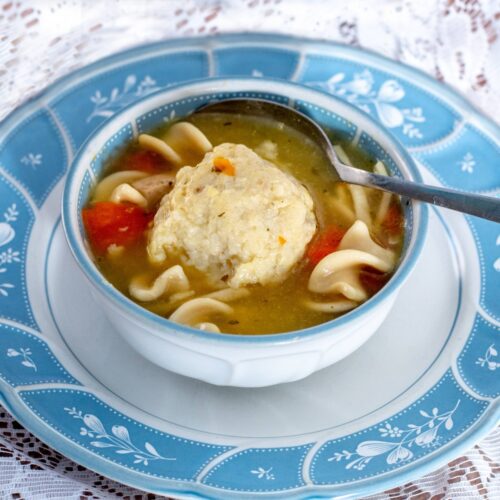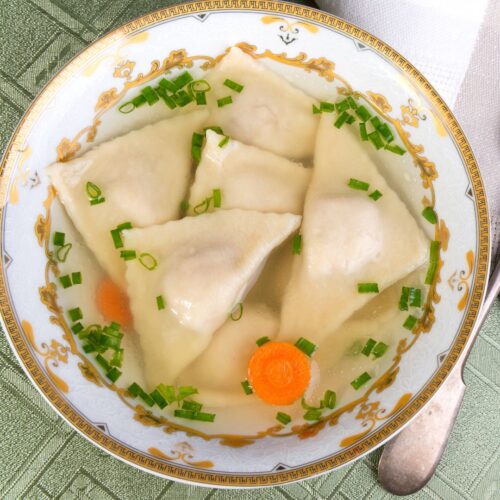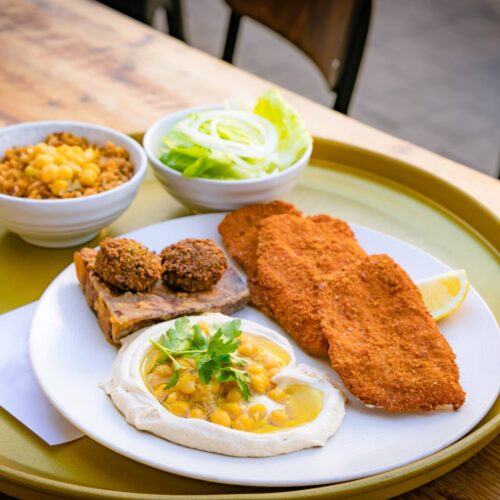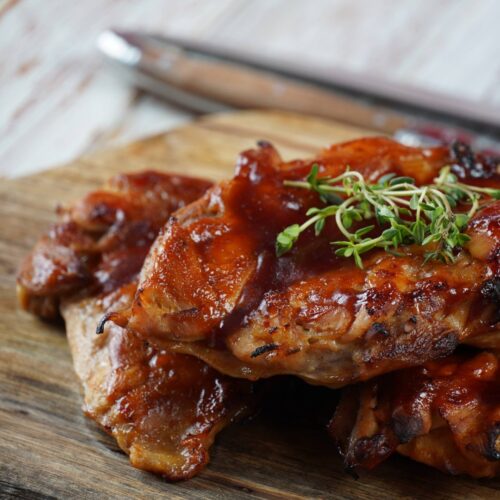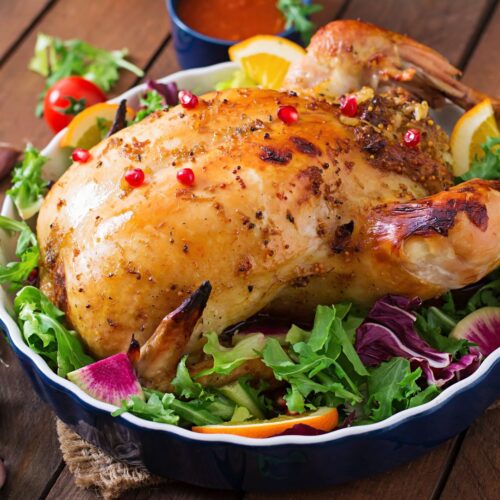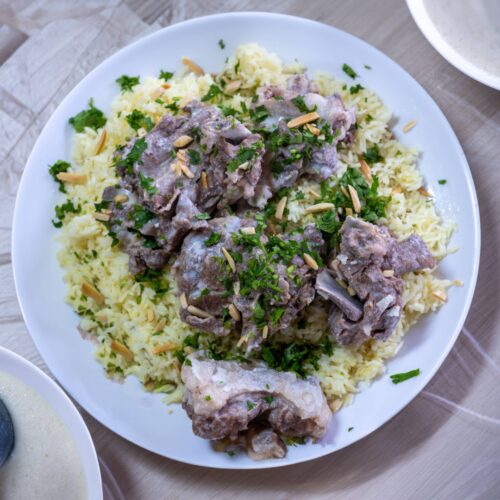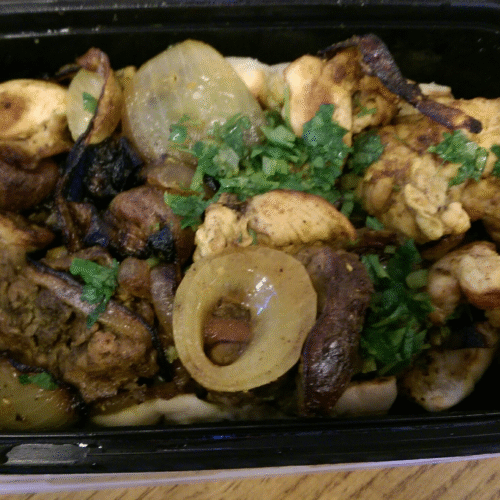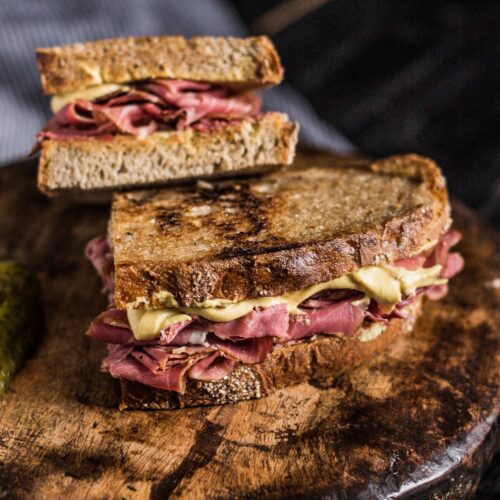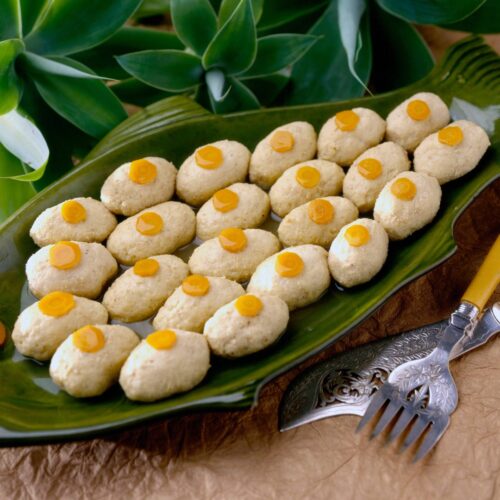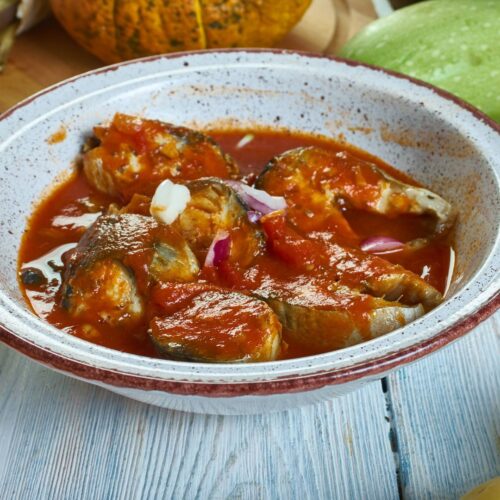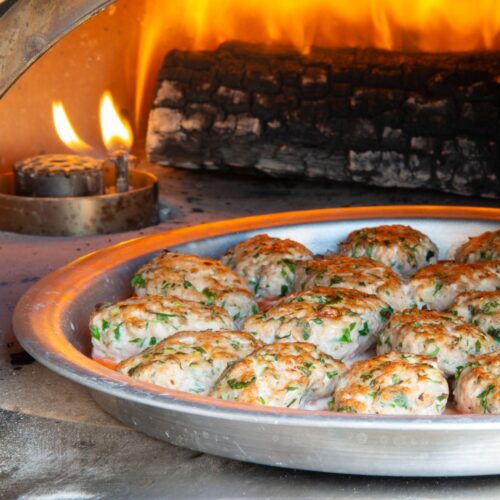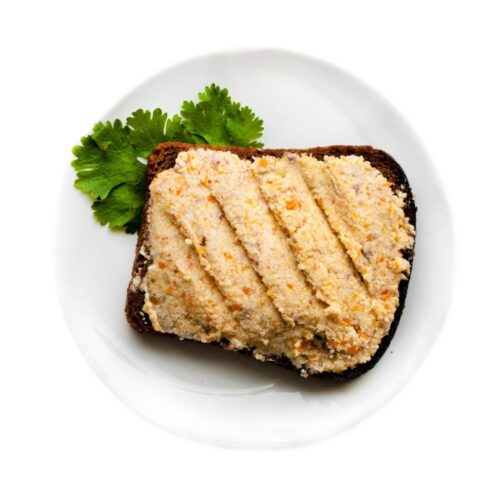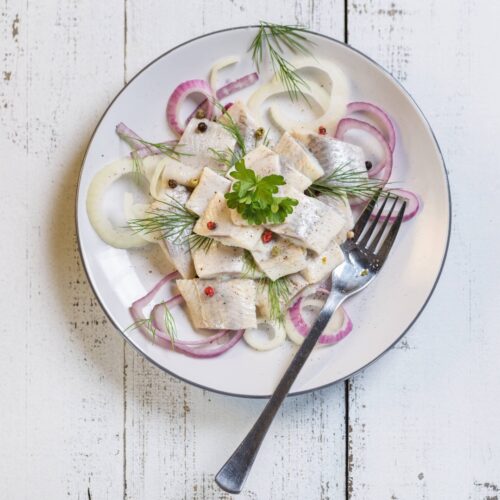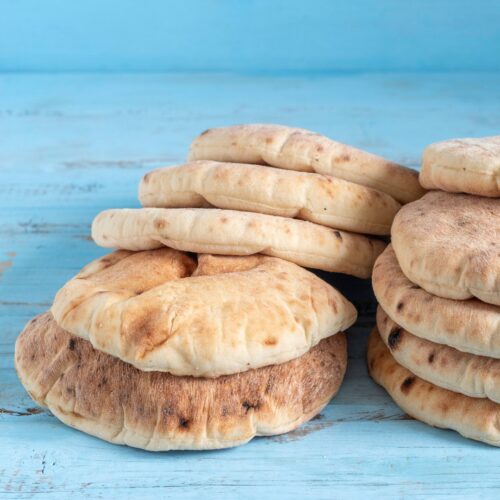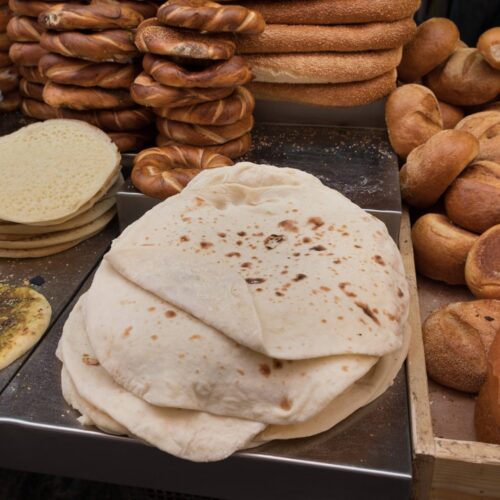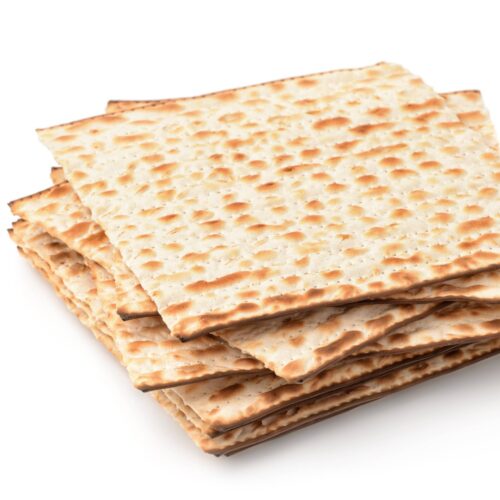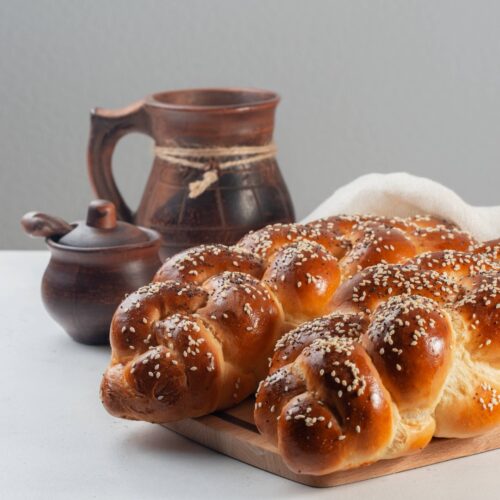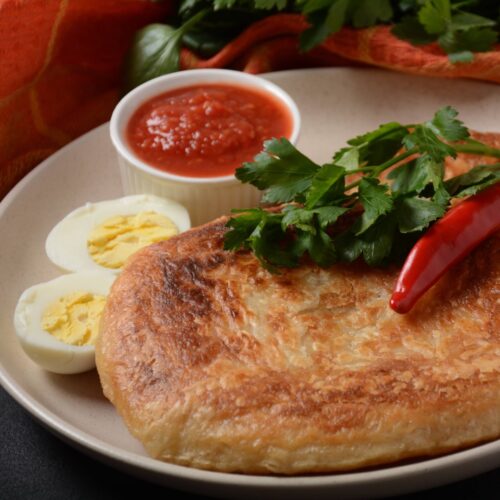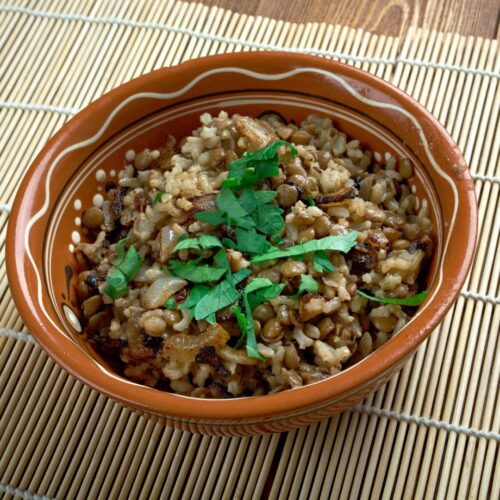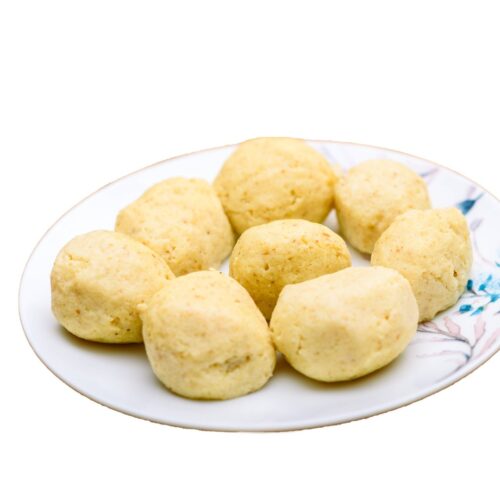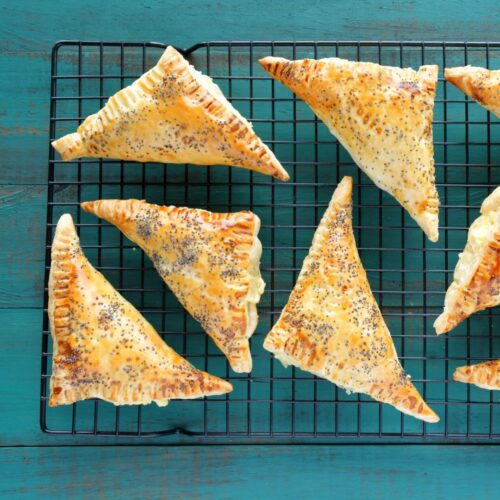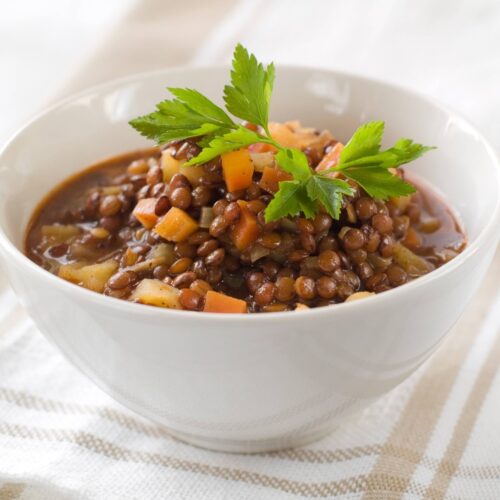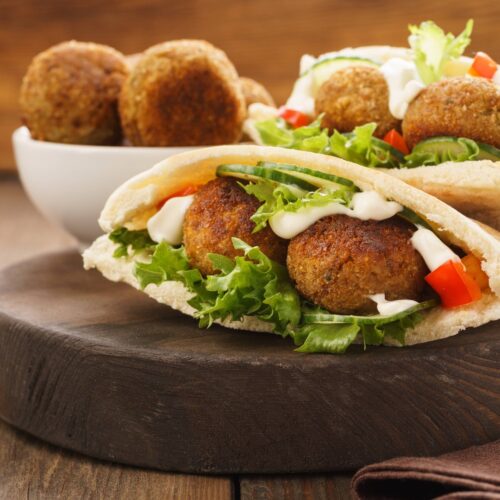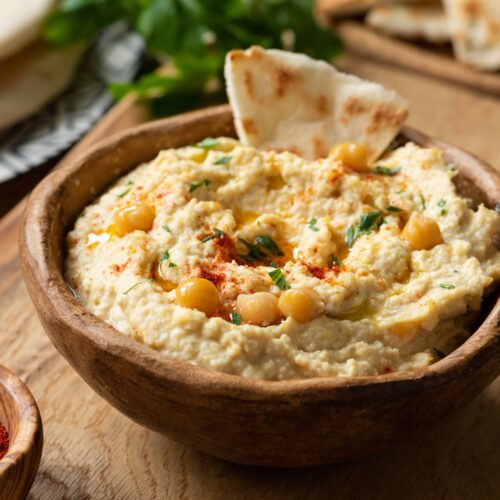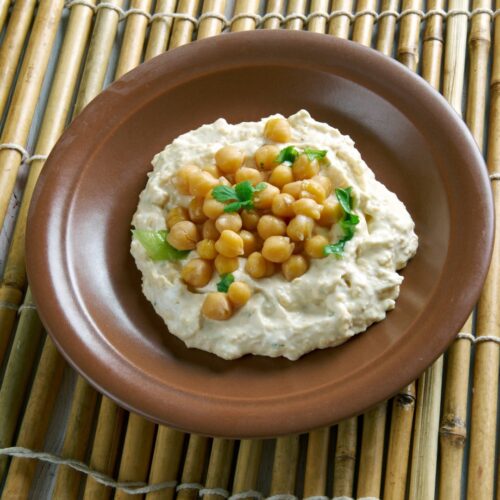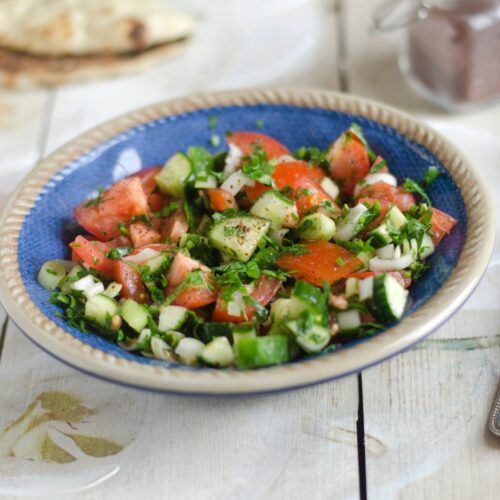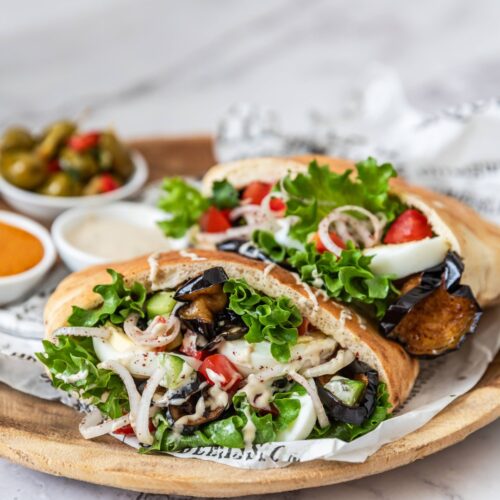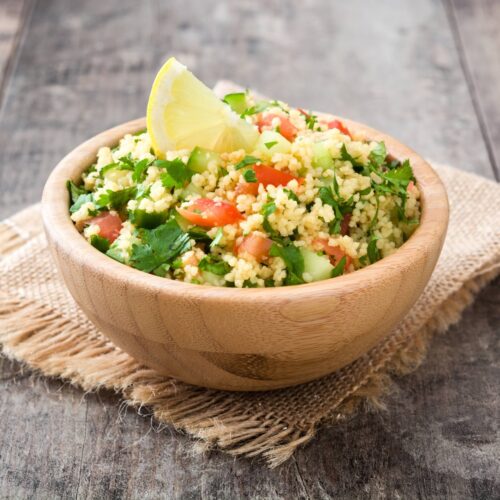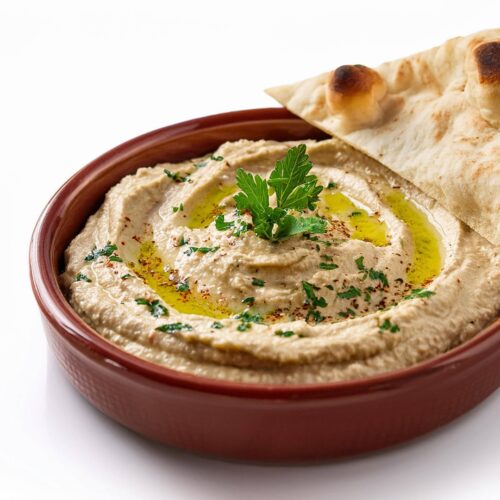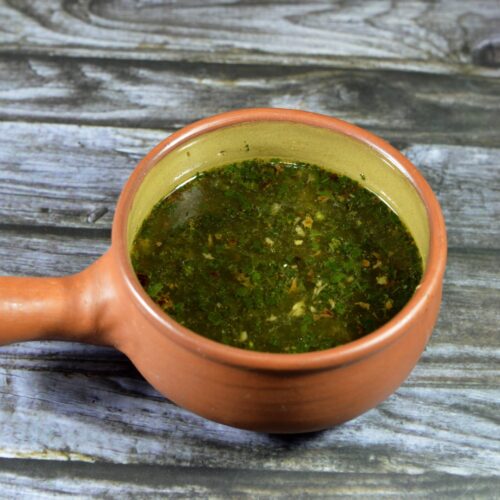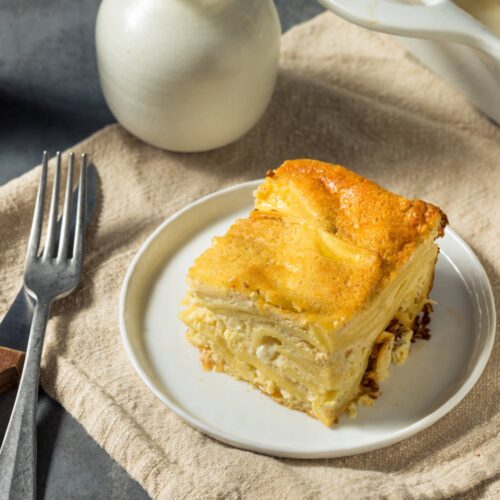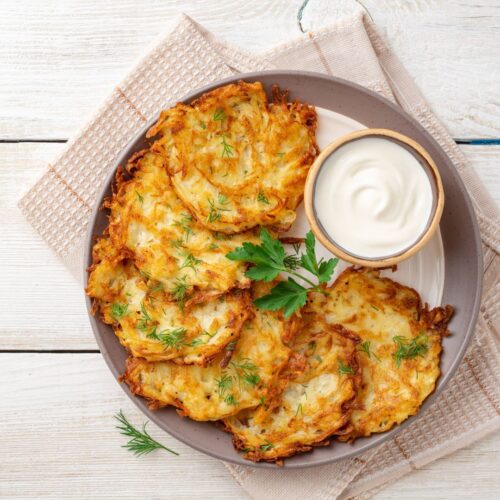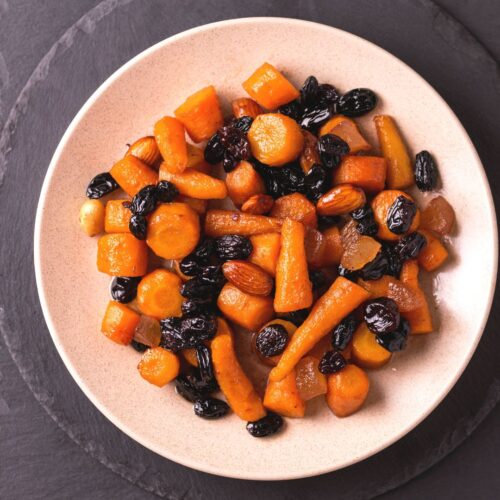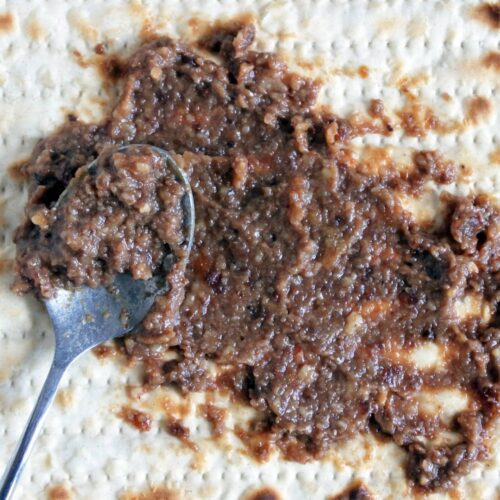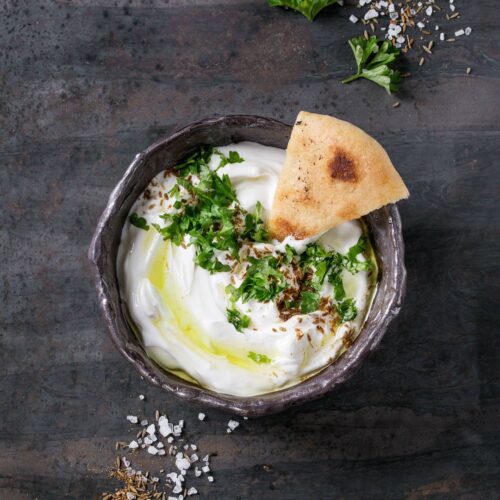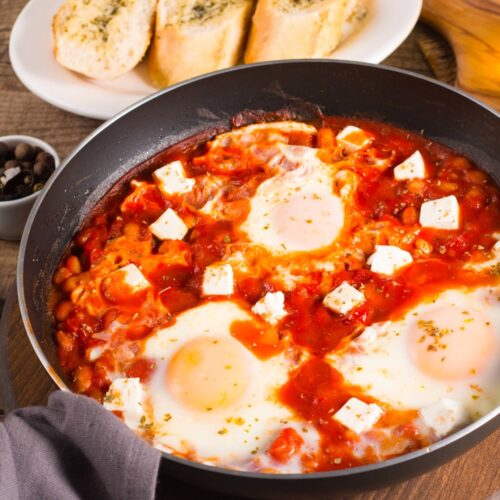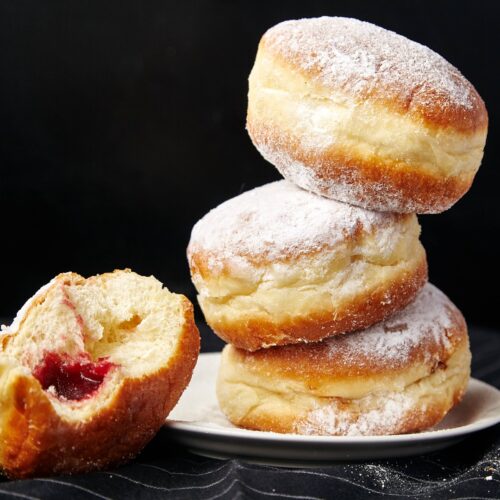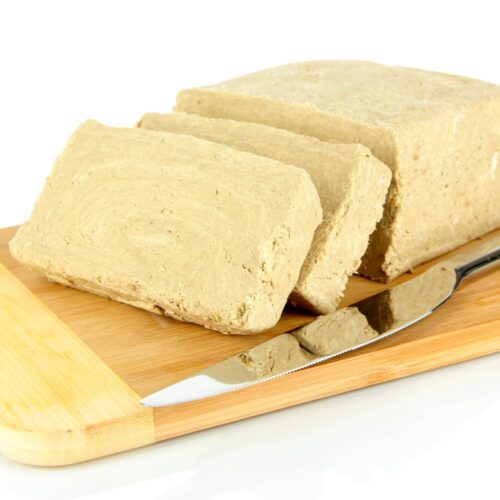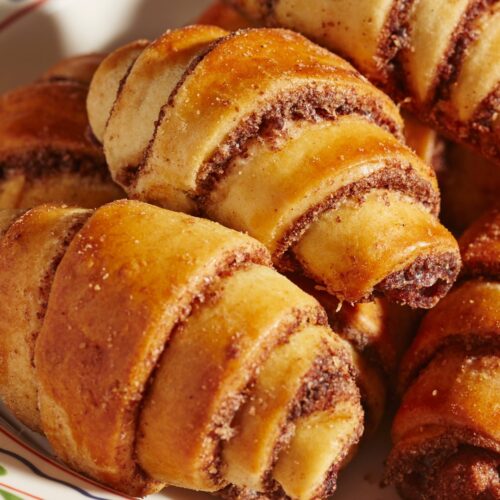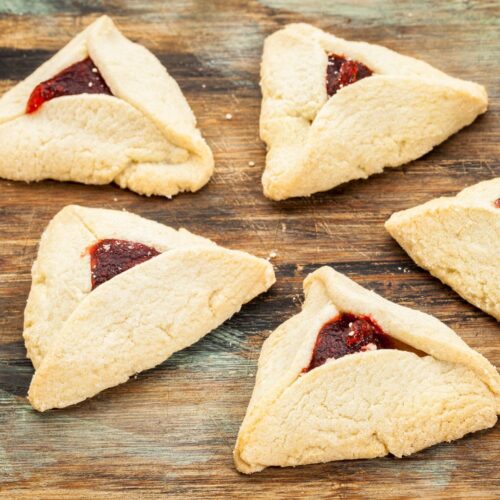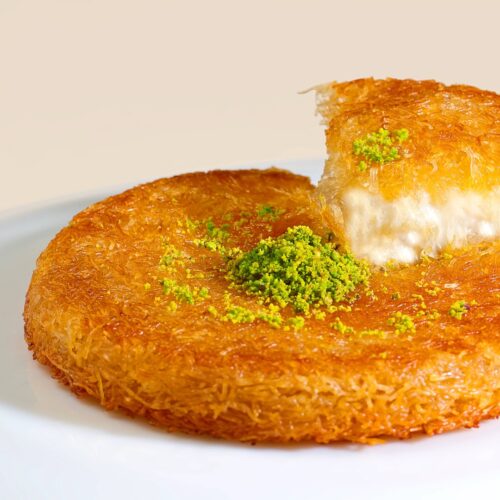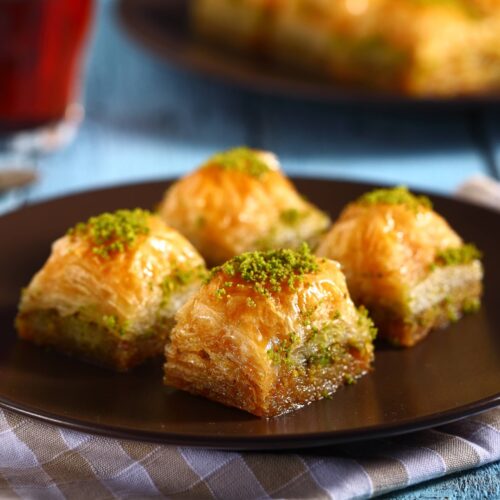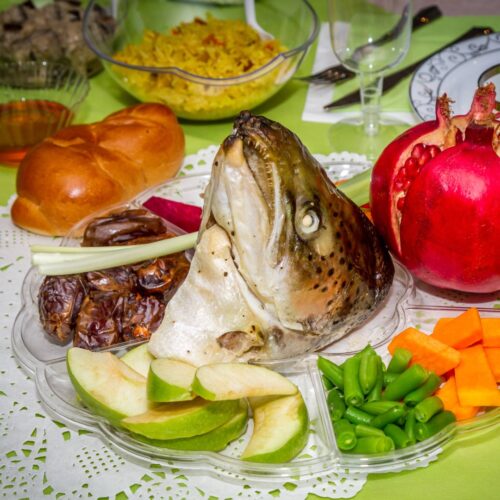The backbone of cuisine in Israel is, surprisingly… vegetables. Israelis enjoy fresh salads, grilled veggies, and vegetable-centric dishes. Veganism and vegetarianism are significant in Israel, where one of the highest percentages of vegans and vegetarians in the world lives. Interestingly, a trend opposing vegetarianism coexists: overall meat consumption is the highest within the Mediterranean region. This protein-rich phenomenon, alongside vegetables, is driven by traditional and modern factors: first, certain Jewish dishes are meat-based; second, a high average income allows for greater consumption of animal foods; and third, Israel has an exceptionally effective food industry that makes meat accessible. Alongside meat, Israelis consume a great deal of dairy, especially feta and cottage cheeses – we again land in a cuisine that encompasses colossal diversity.
GRAINS IN ISRAELI CUISINE
Wheat bread is central, eaten daily, but not necessarily found in all meals, as is the case in Middle Eastern countries. Specialized bakeries pile up rich sourdough as per European tradition, Mediterranean-style loaves with olives, sun-dried tomatoes, herbs, or cheese, and flatbreads in the Middle Eastern style. The most popular variations are pita, slightly leavened flatbread, lafa, larger than pita, soft flatbread used to roll up shawarma or falafel filling, challah, sweet, braided bread, see below, matzah, unleavened flatbread, eaten during Passover holiday, jachnun, very thinly rolled dough, brushed with oil and baked overnight, served with tomato dip, hard-boiled egg, and schug sauce.
Bagels are not traditionally Israeli. They became popular in the United States, particularly among large Ashkenazi populations, such as in New York. In Israel, bagels are less central than pita, challah, and artisanal breads.
Ptitim, known as Israeli couscous, is a culinary adaptation. This is a type of pasta developed in the 1950s, when rice, a staple of that time, was scarce due to austerity measures in the newly established state of Israel. Ptitim was developed as a wheat-based substitute for rice, matching its shape. Now, ptitim comes in round pearl-like shapes, loops, stars, and hearts, has a chewy texture, can be cooked like pasta, prepared pilaf-style by sautéing and then boiling, or baked in a casserole. Alongside ptitim, regular couscous, brought by Jews from the Maghreb, is also enjoyed.
Rice is a popular basic. It is often served plain as a side dish or as part of pilafs, such as mujadara (a Middle Eastern rice, lentils, and caramelized onion stew), or rice kugel (a baked rice dish).
PRODUCE IN ISRAELI CUISINE
Researchers discovered evidence of fava beans cultivated in northern Israel over 10,000 years ago; this staple crop, along with other pulses, has been part of the local diet for centuries!
Israelis have a strong affinity for salads; fresh vegetables form the foundation for many meals. A standard meal accompaniment is Israeli salad – chopped tomato, onion, cucumber, parsley, bell pepper, or chili peppers dressed with olive oil and lemon juice. The name Israeli Salad is used mainly outside of Israel. Locally, it’s salat katzutz.
Roasted vegetable medleys featuring peppers, tomatoes, eggplants, and zucchini are common on dinner tables. Khamutzim (pickled vegetables) add tangy flavors, linking Israeli food to broader Middle Eastern and Balkan traditions.
Avocados, introduced in the 1920s, have gained popularity very quickly. Per capita consumption in Israel is among the highest globally, reaching about 10.5 to 12 kg per person annually, second only to Mexico. The country has developed advanced farming, allowing avocados to expand significantly; now it’s the most widely grown fruit crop in Israel today. This agricultural success is not without strong local enthusiasm for avocados as a staple food, especially for breakfast and dinner.
Fruits are significant in Israel: persimmons, grapefruits, stone fruits, berries, and exotic fruits are consumed fresh, as well as in sorbets and smoothies. The national fruit of Israel is the prickly pear, sabra. Native Israelis use sabra to describe their national temperament, symbolizing how Israelis can appear tough, direct, or prickly outwardly but are warm, generous, and kind-hearted within.
Widely grown and culturally significant are dates, figs, and grapes, often dried and used in cooking and baking. Pomegranate seeds and juice are added for flavour and colouring. Jaffa oranges are appreciated for sweet and almost seedless nature..
MEAT IN ISRAELI CUISINE
Israel is among the world’s top meat eaters, ranking 10th globally with about 107 kg (236 lbs) of meat per person each year. Poultry is the largest driver of this figure – Israel actually ranks fifth worldwide in chicken consumption, followed by beef, mutton, goat, and organ meats. Pork, on the other hand, is rarely eaten because it’s prohibited in both Jewish and Muslim traditions; kosher laws shape how meat is slaughtered and prepared.
When Israel was just getting started as a state, meat wasn’t always easy to come by, and preservation was essential. You still see plenty of dried, smoked, cured, and slow-cooked meats, clever uses of rendered fat. Over time, country invested in advanced livestock farming, and those efforts paid off.
Among poultry, the chicken is the first choice, but it’s the turkey where things get interesting. Israelis eat more turkey than Americans – even without Thanksgiving on the calendar,. One reason for its popularity goes back to the pre-refrigeration days, when preserved meats pastrami and salami were staples. Turkey’s firmer texture made it ideal for these products, so farms began raising it in large quantities. Later, with refrigeration making fresh meat easier to store, turkey found new life as a convenience food – in the form of schnitzel or burger patties. Today, it’s a staple on Israeli tables.
In many Arab neighborhoods, mutton has long been a staple for large families and communal meat. Sheep are still raised in villages today; it’s often slow-cooked in stews, grilled for kebabs, baked in pies, or braised with spices and herbs. You’ll see it in dishes shared with Arab, Druze, and Bedouin cuisines – like mansaf, stuffed vegetables with minced mutton, or kebab skewers. It’s also common for Jewish holiday meals, especially Passover.
Beef also has a strong presence – Israel tops the Mediterranean region in overall meat consumption and ranks as the 6th largest consumer per capita worldwide. Beef takes many forms: slow-cooked brisket, hearty cholent stew, and pastrami are favorites. Add to that the influence of American cuisine, and you’ll find plenty of juicy burgers and steaks, too.
Liver dishes are particularly popular in Israeli cuisine. From chopped liver and skewered goose liver to liver sausages and silky pâtés, it’s a category with lots of variety.
FISH AND SEAFOOD IN ISRAELI CUISINE
Seafood, as it does not have fins and scales according to Torah, is non-kosher; its consumption is close to zero. Though seafood is available for non-Jews, the long-lasting tradition was directed towards other food groups, and seafood is not very present overall. Fish, though, is available fresh and frozen from the coast of the Mediterranean or is raised in fish farming ponds. It is very challenging to narrow down the common preparations; fish recipes come from the global Jewish diaspora and are endless. Fresh fish, usually trout and seabream, are served whole, in the Mediterranean style, grilled or fried, and dressed with lemon juice. Fish like grouper or halibut are braised in a spicy hot pepper dish called hraime, brought by North African Jews. Carp is minced, shaped into balls, and cooked in fish broth to gefilte fish dish.
Pickled herring on Israeli tables is an exclusive appetizer compared to other Middle Eastern tables. It has a historical presence linked to Jewish immigrants from Eastern Europe and remains popular at Sabbath meals, synagogues, and certain social gatherings. Fish kufta (hinting at its aromatic meat cousin dish, kofte) is typically fried with spices, herbs, and onions and served with tahini or yogurt sauce. Overall, cold fish dishes, mainly from Ashkenazi culinary tradition, are both popular and convenient to serve during Shabbat when no cooking can happen.
EGGS AND DAIRY IN ISRAELI CUISINE
Eggs are very prominent, not only in bakes or breakfasts. Hard-boiled eggs are incorporated in many Jewish dishes. Originating from North Africa, the eggs and tomato shashouka was brought to Israel in the 1950s-60s, became popular in the 1990s, and is often associated with Israeli dish, while its aslo a standard breakfast and lunch item in Maghreb region.
Dairy has always played a big role in Israeli farming and in everyday eating, shaped by both Jewish and Mediterranean food traditions. You won’t see raw milk used much in cooking, but dairy pops up in breakfast cereals, desserts, creamy dishes.
Israel has some locally popular cheeses, though many are adaptations of Mediterranean styles rather than completely unique inventions:
- Gvina levana, literally white cheese, – a soft, creamy, spreadable cheese, similar to quark. It’s a breakfast staple.
- Tzfatit, Safed cheese, – a semi-hard sheep’s milk cheese originating from Safed (Tzfat) in northern Israel. It’s a bit salty, crumbly, and often compared to feta but firmer.
- Cottage cheese – hugely popular in Israel, so much so that it became a symbol of cost-of-living protests in 2011.
- Labneh – a strained yogurt, often treated like a soft cheese. It’s eaten with olive oil and za’atar, spread on bread, or used as a dip.
Butter and cream show up too, mostly in baking and sauces, but olive oil is an everyday essential.
DESSERTS IN ISRAELI CUISINE
Dessert table in Israel distinctively fuses East and West: tahini, dates, rose water, pistachios, and olive oil combined with European pastries babka and rugelach. Dairy (cheesecakes, blintzes, creamy puddings) and nuts (almonds, walnuts, pistachios, sesame in halva) are at the center of many desserts.
Along with honey, fruit blossom waters, and almond syrup, silan is a characteristic Middle Eastern and Israeli sweetener. Silan, a date honey or dark sticky syrup, is a substitute for sugar, used in many desserts.
Jewish holidays shape dessert culture: sufganiyot (jam doughnuts) for Hanukkah, hamantaschen for Purim, honey cakes for Rosh Hashanah, flourless nut cakes for Passover. Compared globally, Israel’s dessert identity is more closely tied to ritual and seasonality than to everyday baking (unlike France or Austria, where dessert is a daily staple).
